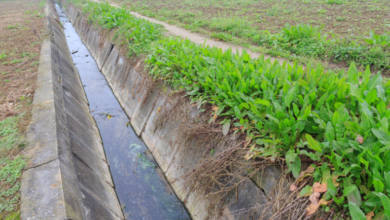How Far Apart Should Post Rail Fencing Be?

Have you considered achieving the best combination of longevity, performance, and aesthetics in your post-rail fencing? The goal is not only to create space between posts for the aesthetics, but also to focus on long-term performance and structure. Post space is crucial for constructing a paddock, driveway, or boundary fence. Today’s article will discuss the key elements in post-rail fence space and how to obtain a long-lasting fence.
The Importance of Correct Post Spacing
The spacing of fence posts is vital for their strength and security since a large gap can lead to sagging and deterioration. On the other hand, close-spaced posts would be an extra cost. In most post-rail fence installations in Australia, the optimal distance is between 2.4 and 3 meters. It is a trade-off between security and resource efficiency.
However, spacing is not equal and is based on the purpose and type of fence. For example, a fence containing livestock would require a shorter post space to resist pressure. Consider what is required in your specific case in advance.
Factors That Influence Post Spacing
Several factors are at play in post-rail spacing. For a fence to properly serve its purpose, keep these in consideration:
- Purpose of the Fence: The space in a fence intended for ornamentation could be greater than in a fence intended for protection or keeping stock.
- Terrain and Ground Condition: More fine, sandier soils require tighter post placement with more significant support, but hard soils would support greater post spacings.
- Material of the Fence: Heavy-weight items like steel rail or hardwood must have reduced post space to support them.
- Weather Conditions: Tighter spacing in wind-prone areas ensures greater stability and prevents damage.
By evaluating these elements, you can customise post spacing based on your property’s conditions and the fence’s intended use.
See also: Essential Steps To Prepare Your Home for Sale
Benefits of Proper Post Spacing
Getting the post space in order is crucial. It makes the fence sturdy and long-lasting in the future. It eliminates the danger of sagging rails and structure collapse, particularly in extreme Australian weather conditions. Furthermore, it is secondarily cost-effective because no unnecessary materials are needed. Lastly, correctly spaced posts are pleasing to the eyes and uniform in design, raising the value of your land.
How to Plan Your Post Rail Fence
Planning is important in a successful fencing project. Measure around the area where the fence will go. Divide the length by considering post space and determine how many posts will fit. Mark where every post is going and keep equal space.
For larger projects, hire expert post rail fencing specialists to get precision and efficiency. Experts can provide valuable suggestions, ranging from the choice of materials to compliance with local laws. In doing so, you get a professional finish without trial and error.
Conclusion
Correct post spacing is the key to a properly constructed post rail fence. You can design a durable and pleasing fence by considering usage, type of soil, and weather conditions. Don’t trust luck with your fencing—design carefully or hire a professional and obtain a permanent solution. Ready to get started on your project? The first step in obtaining the perfect post rail fence is today.





